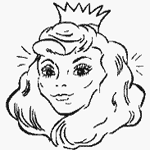

|

WELCOME TO THE WORLD OF PUZZLES AND OPTICAL ILLUSIONS
Is it worth trusting to everything that you see? Could you see what nobody has seen? Is it true that motionless objects can move? Why do adults and children see one and the same object differently? In this website you will find answers to these and many other questions.
Amusing puzzles, psychological tests, development online games, interesting facts, nature mysteries, atmosphere and astronomic phenomena - you will find all this in this website.
This website contains
2235 optical illusions.
 |  Impossible objects Impossible objects
The Escher triangle, the devil’s fork, impossible stairs… Optical illusions have been under intensive study in the middle of the last century. Currently they are somewhat forgotten. But to no purpose, at least since due to them various misunderstanding and troubles in various spheres of human activity are possible. |  |  Color illusions Color illusions
It has been known for about one hundred years that when the image, consisting of light and dark areas, appears on the retina, the light from brightly illuminated areas as if spills over to the dark spots. This phenomenon is called irradiation. |  |  Visual distortions Visual distortions
Illusions often bring to completely wrong quantitative assessment of real geometric values. It turns out that one can be mistaken at 25% and even more, if approximate assessment won’t be verified by a drawing scale. |  |  Images recognition Images recognition
If you do not know, what is drawn in these pictures, it is virtually impossible to see the picture. However, it you know, what is drawn, it is very easy to see the picture. |  |  Ambiguous images Ambiguous images
Is it a hare or a duck? Is it a wife or a mother-in-law? Is it a sad old man or a cowboy? Is it one face or two faces? Is it a donkey or a seal? An old man or two lovers? Everyone sees his image! |  |  Movements illusions Movements illusions
Look at the motionless images, and they will move! Look at the identical moving balls, and you will see that they are of different size! Viewing of this image is not recommended to people with epilepsy. |  |  Size preception Size preception
Our eye assessments of geometric real sizes very mush depend on the character of the image background. This refers to length, area and radius of curvature. We can illustrate that the above stated information is relevant for angles, shapes, etc. |  |  Upside-down Upside-down
An upside-down image – is one of the most beautiful and funny optical illusions. You look at it and see a rather sensible picture. But if you turn the picture at 180 or 90 degrees, than instead of the expected turned over image you will see rather different picture! |  |  Deep perception Deep perception
Illusion of depth perception is inadequate reflection of the perceived object and its qualities. Currently illusory effects, observed upon visual perception of two-dimensional posterized images are the most studied ones. Pay attention to how it is difficult to perceive these images as concave (or convex). The brain unconsciously sees the pictures only “single-concave (-convex)”. |  |  Funny pictures Funny pictures
Virtually, they do not refer to illusions, but it is interesting to look at them. You will see frights, interesting photos that you can do yourself independently, unusual buildings and many other things. |  |  3D-images, stereograms 3D-images, stereograms
Concentrate your attention on some dot of the ornament, and try to as if bisect your glance, carefully shifting one eye to any point of the next ornament. When distinct lines of the picture become blurred, “smearing” the picture, you will feel that it extends deep down and in breadth, opening to eye earlier invisible space. |
|
|


 Galleries
Galleries Test & Games
Test & Games News
News Brain Soft
Brain Soft About
About

































